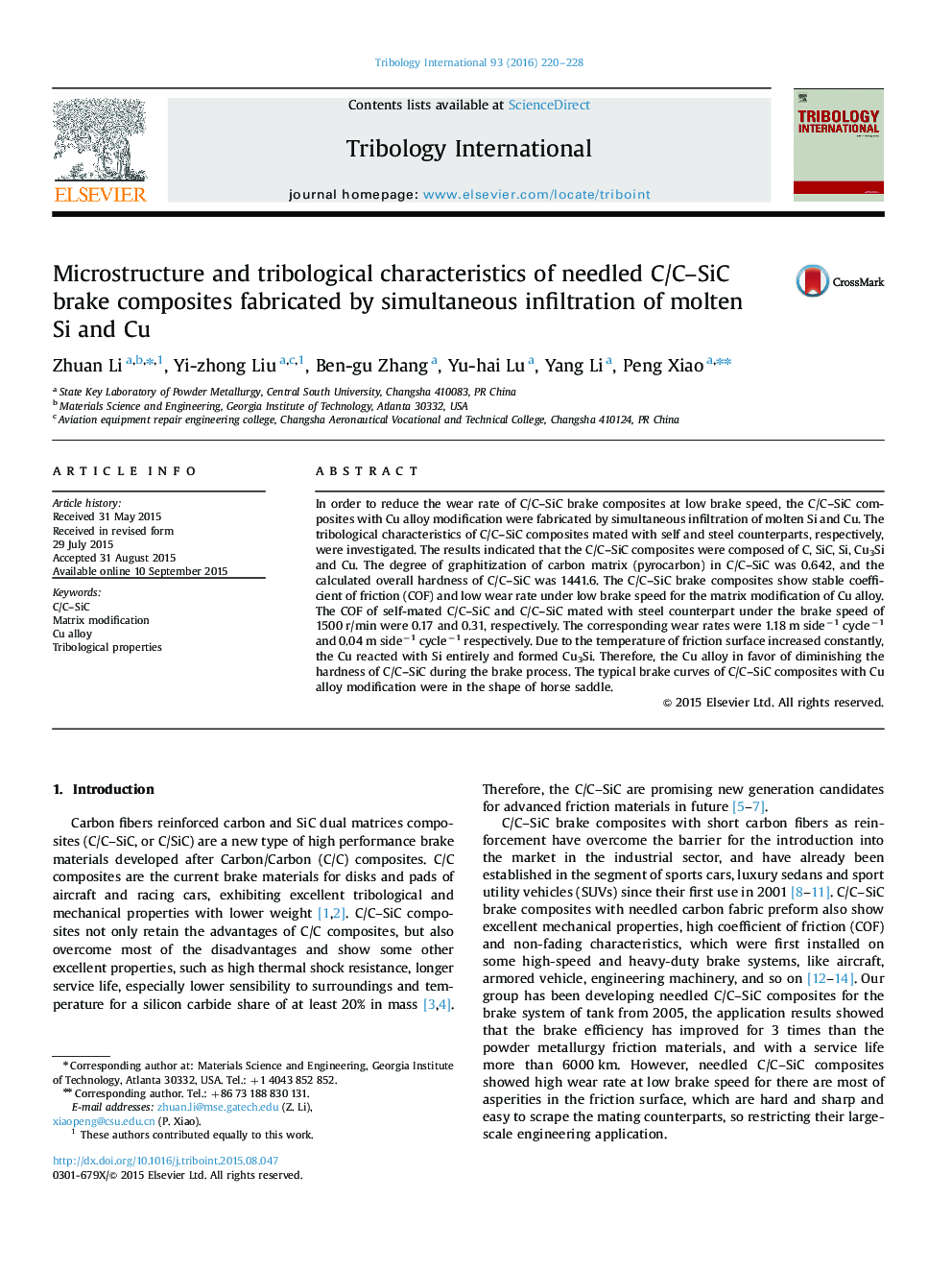| Article ID | Journal | Published Year | Pages | File Type |
|---|---|---|---|---|
| 614271 | Tribology International | 2016 | 9 Pages |
•C/C–SiC composites are promising candidates for advanced friction materials in future.•In order to reduce the wear rate of C/C–SiC composites at low brake speed.•The C/C–SiC composites with Cu alloy modification were fabricated by simultaneous infiltration of molten Si and Cu.•The tribological characteristics of C/C–SiC composites mated with self and steel counterparts, respectively, were investigated.
In order to reduce the wear rate of C/C–SiC brake composites at low brake speed, the C/C–SiC composites with Cu alloy modification were fabricated by simultaneous infiltration of molten Si and Cu. The tribological characteristics of C/C–SiC composites mated with self and steel counterparts, respectively, were investigated. The results indicated that the C/C–SiC composites were composed of C, SiC, Si, Cu3Si and Cu. The degree of graphitization of carbon matrix (pyrocarbon) in C/C–SiC was 0.642, and the calculated overall hardness of C/C–SiC was 1441.6. The C/C–SiC brake composites show stable coefficient of friction (COF) and low wear rate under low brake speed for the matrix modification of Cu alloy. The COF of self-mated C/C–SiC and C/C–SiC mated with steel counterpart under the brake speed of 1500 r/min were 0.17 and 0.31, respectively. The corresponding wear rates were 1.18 m side−1 cycle−1 and 0.04 m side−1 cycle−1 respectively. Due to the temperature of friction surface increased constantly, the Cu reacted with Si entirely and formed Cu3Si. Therefore, the Cu alloy in favor of diminishing the hardness of C/C–SiC during the brake process. The typical brake curves of C/C–SiC composites with Cu alloy modification were in the shape of horse saddle.
Graphical abstractFigure optionsDownload full-size imageDownload high-quality image (194 K)Download as PowerPoint slide
